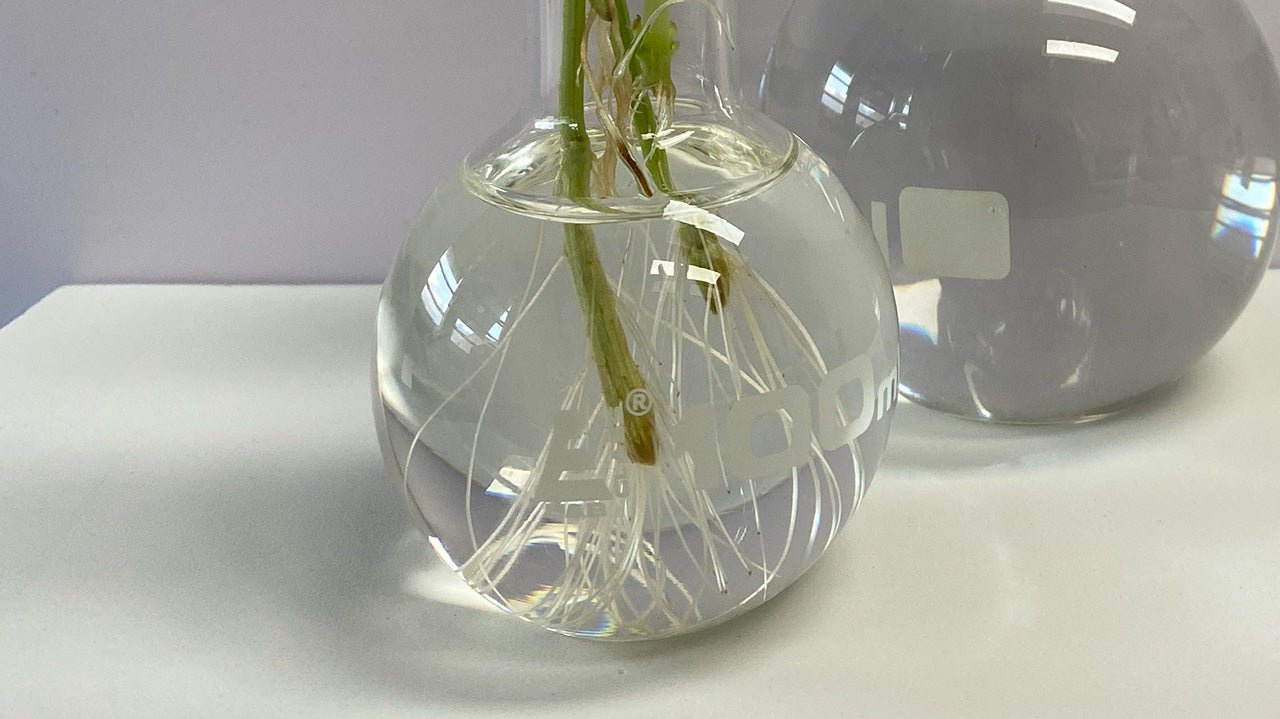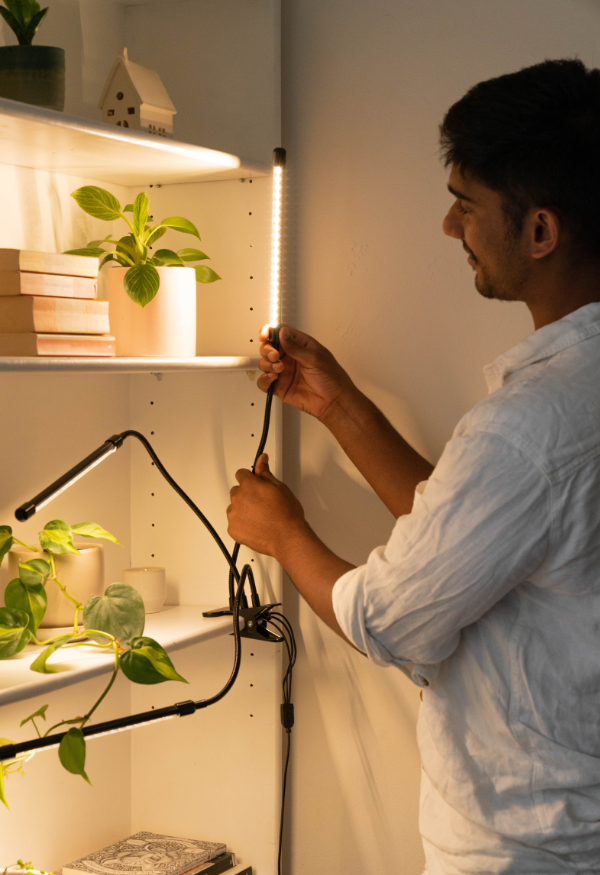Your Cart is Empty
shop
How To Propagate
May 26, 2022 2 min read

The first thing you need is a healthy parent plant with some green new growth that looks healthy. Once you’ve found a suitable sample, you can follow the steps to reliably propagate new plants.
Read below or watch our reel where Dilhan explains how to propagate!
-
Cut the plant below a node, about 1cm away from the joint, at a 45° angle. (see diagram)

- Optional: use a rooting gel like Clonex Purple Rooting Hormone to seal the cut and boost the rooting process.
- Trim any excess leaves - The more leaves there are on your plant stem, the more nutrients and water the plant will need to survive. If it needs too much water, the plant leaves and stem may shrivel up and die before the roots get a chance to grow. If you trim off excess growth, you're more likely to get some strong root development. It can be hard to judge how much you should trim, but as you get more experienced it will be easier to identify how much you need to trim off.
- Insert the cut and trimmed node into your propagation vessel, ensuring the leaves are out of the water.
- Drain out water and replace once a week. Plants suck up oxygen from the water they’re in. As oxygen levels decrease, the plant roots become more likely to fail.
- Place your cutting under a grow light, or in an area with bright, indirect sunlight.
- Rooting can take 2-4 weeks.
- Once your roots are 3-5cm long, they’re most likely strong enough to support a plant. You can leave them in the propagation vial as a beautiful display, or transplant them into rockwool cubes or soil.

Top tips for propagating plants
- Always use sharp scissors or a scalpel as this will help you get the cleanest cut without damaging the plant.
- The ideal environment for propagations to grow in is around 21 degrees, with high humidity levels.
- Take cuttings from newer growth as this will have a higher chance of propagating successfully.
- Use filtered water or rainwater if possible – these don’t have fluoride or chloride which can kill beneficial bacteria living in the plant. It will also prevent you from getting an ugly build-up of minerals on the walls of your propagation equipment.
- Most of the time the actual leaves of the plant shouldn’t be immersed in water.

What kind of light do propagations need?
Cuttings thrive of bright, indirect light. Using a grow light that emits lights between 400 and 500 nm (which is observed as blue light) provides your cuttings with the right light that they need to grow!

That’s about it for propagating plants from cuttings! If you’re looking for a new hobby our propagation kits come with everything you need to get going and are a great place to start!
Also if you have more questions check out the rest of our propagation series:
Leave a comment
Comments will be approved before showing up.

Take $10 off your first order!
Grow lights, smart gardens, sprout kits and more - we've got all the tools you need to get growing in all the tricky places. Sign up to get your discount code!

